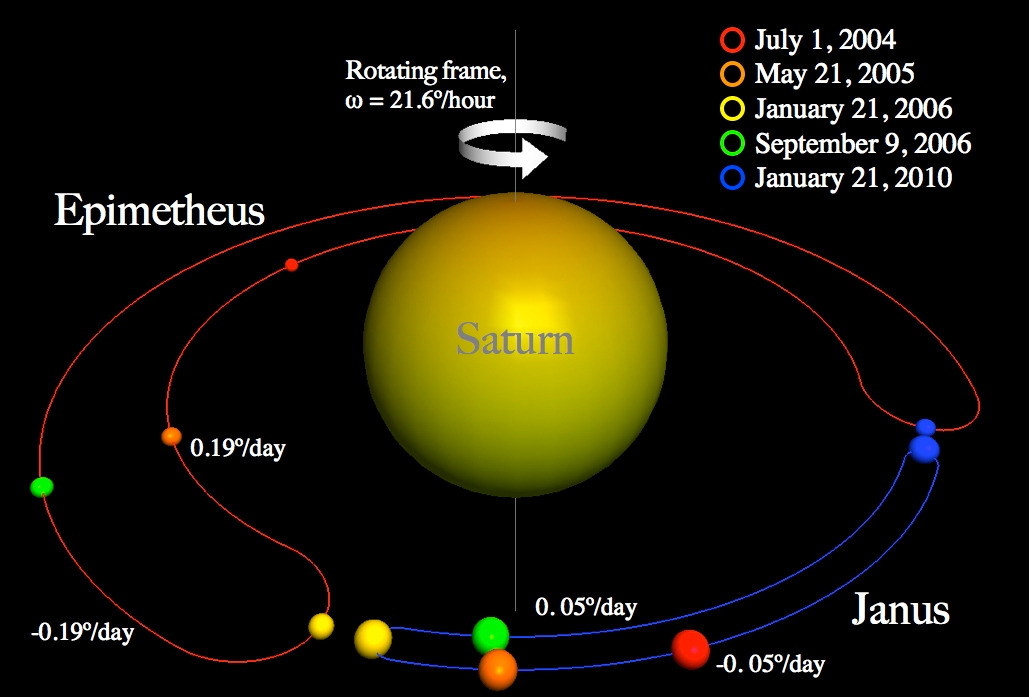What if Earth shared its orbit with another planet?

The series "Imaginary Earths" speculates what the world might be like if one key aspect of life changed, be it related to the planet or with humanity itself.
Earth is the only planet traveling within its nearly circular orbit around the sun. But what if Earth shared its orbit with another planet?
One of the most unusual ways in which two planets might "co-orbit," or share the same zone around their star, are so-called horseshoe orbits. Instead of both worlds moving in a circle around a star, each would move along the edge of their own somewhat horseshoe-shaped track, with these crescents facing each other like two halves of a broken ring.
Related: 10 interesting places in the solar system we'd like to visit
"I think horseshoe orbits are among the most exciting configurations for other Earths," astrophysicist Sean Raymond at the Laboratoire d'Astrophysique de Bordeaux in France, told Live Science. "Since the two planets formed in the same disk around the same star, and likely from similar stuff, studying their evolution is akin to studying the lives of twins separated at birth."

Horseshoe orbits might sound extraordinarily unlikely. However, Saturn's moons Janus and Epimetheus travel in horseshoe orbits about 93,000 miles (150,000 kilometers) from the planet, just beyond Saturn's main rings, Raymond noted. The closest they get is about 9,300 miles (15,000 km) from one another.
Let's imagine what horseshoe orbits might look like with a pair of Earth-size worlds in the sun's habitable zone — the area surrounding a star temperate enough for liquid water to survive on a planet's surface. Let's name these worlds Terra and Tellus, both Latin words for "Earth."
Breaking space news, the latest updates on rocket launches, skywatching events and more!
At their closest possible approach to each other, Terra and Tellus would come within about 4% to 5% of an astronomical unit (AU), the average distance between Earth and the sun (which is about 93 million miles, or 150 million kilometers). At such a distance, they would look as large to each other as one-quarter to one-fifth the diameter of the full moon, Raymond said. Afterwards, they would slowly recede away from each other until they passed out of sight of one another behind the sun.
"It would be awesome to see the horseshoe companion grow in the sky to become a dominant source of light," Raymond said.
The length of these cycles of approaches and departures depends on the width of the horseshoe orbits. For Terra and Tellus, the horseshoe orbits would extend from about 0.995 AU to about 1.005 AU, so it would take about 33 years between close encounters, Raymond said. The tiny shifts in distance from the sun would likely mean the climates of Terra and Tellus would not change much as they switch between sides of their horseshoe orbits, he noted.
What might life be like on Terra and Tellus? Raymond could imagine rivalries and partnerships between the planets, including wars and star-crossed love stories. One might also imagine that long before they launched missions to one another, these worlds might engage in long-distance pen pal relationships over radio.
Horseshoe Earths would likely evolve during the course of planetary formation as protoplanets, or embryonic worlds, both having collided and migrated from one orbit to another.
"Some fraction of the time, a horseshoe configuration will pop up," Raymond said. "Exactly how frequently this happens has never been studied carefully to my knowledge."
Still, "even if it's a one-in-a-million occurrence, that still leaves plenty of potential horseshoe Earths among the hundreds of billions of stars in the galaxy," Raymond concluded.
Originally published on Live Science.

Charles Q. Choi is a contributing writer for Space.com and Live Science. He covers all things human origins and astronomy as well as physics, animals and general science topics. Charles has a Master of Arts degree from the University of Missouri-Columbia, School of Journalism and a Bachelor of Arts degree from the University of South Florida. Charles has visited every continent on Earth, drinking rancid yak butter tea in Lhasa, snorkeling with sea lions in the Galapagos and even climbing an iceberg in Antarctica. Visit him at http://www.sciwriter.us

